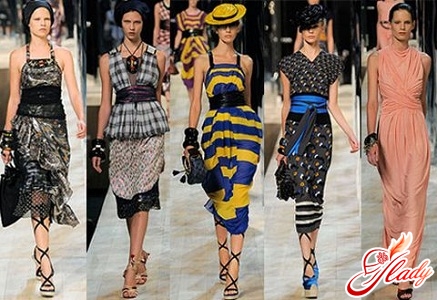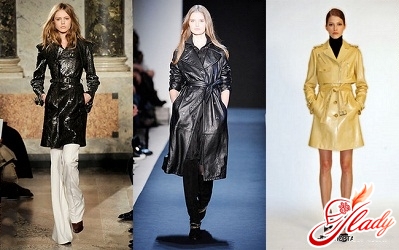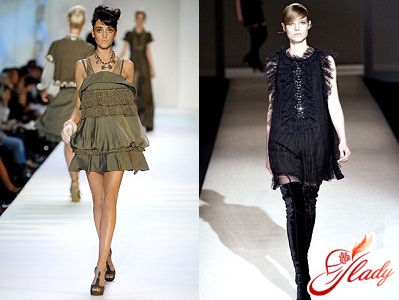 According to the history of fashion, the skirt as an itemof a woman's wardrobe appeared five centuries ago. However, the semblance of a skirt was already present among ancient people. A striking example is the loincloth or schenti, which can be considered a prototype of a mini-skirt. Only in those days clothes were not divided into women's and men's, and the same wardrobe items were worn by both sexes. The appearance of a skirt as an item of women's wardrobe dates back to the 16th century. Its difference from a dress or tunic was in the way it was fastened: a skirt was fastened at the waist. In Spain, a trendsetter, the first skirts were sewn on a dense cover with an insert of wooden or metal hoops. Such skirts were narrow at the waist and flared at the bottom. No
According to the history of fashion, the skirt as an itemof a woman's wardrobe appeared five centuries ago. However, the semblance of a skirt was already present among ancient people. A striking example is the loincloth or schenti, which can be considered a prototype of a mini-skirt. Only in those days clothes were not divided into women's and men's, and the same wardrobe items were worn by both sexes. The appearance of a skirt as an item of women's wardrobe dates back to the 16th century. Its difference from a dress or tunic was in the way it was fastened: a skirt was fastened at the waist. In Spain, a trendsetter, the first skirts were sewn on a dense cover with an insert of wooden or metal hoops. Such skirts were narrow at the waist and flared at the bottom. Noit wasn't used back then, and all skirts were sewnmanually. In France, skirts were lighter, since lightweight material was used for sewing. And last of all, the fashion for frame skirts came to Germany and the name "skirt" penetrated into the Russian language from German. In the middle of the 17th century, the frame form goes out of fashion and is replaced by straight skirts with folds, as well as skirts draped on the sides. In the 18th century, a new invention appears - a skirt on panniers (flexible metal plates assembled into a frame). Later, transparent dresses come into fashion, distinguished by their lightness and soft lines. Naturally, at that time there were no dyeing methods and they were simpler than now. Despite this, every woman could choose the color and pattern of the skirt to her taste. In the middle of the 18th century, the fashion for luxurious wardrobe items comes back. Skirts with a crinoline (hair cover) appear. Later, they are also improved, straight skirts decorated with fabric and bow folds appear. And already in 1913, tapered skirts invented by Paul Poiret came into fashion. In the 20th century, the fashion for skirts changed again: corsets were abolished, the length was reduced. The famous Coco Chanel brought elegant midi skirts into fashion, as well as pleated skirts. Using which by that time was available, fashion designers made skirts with various inserts. Later, after the Second World War, the famous tweed suit with a narrow skirt appeared. In reducing the length of the skirt, Mary Quant went further than anyone else, inventing the miniskirt. And since 1965, such models of short skirts are not inferior in popularity to maxi and midi. During the 20th century, the shapes of skirts continued to change, depending on the imagination of fashion designers. We recommend reading:

Making Money with Desserts: Success Stories
Evgeniya Polischuk (Fedutinova) instagram:@evgeniyafedutinovavk.com/janeshomebaking– It all started with baking for family and friends. Gradually, I started posting photos of my baked goods on Instagram – and orders started coming in. I made my first custom-made cake on October 13, 2014, and a little earlier I started making macaroons and cupcakes. You could say that the business “found me”, I am very […]

Soups are cold recipes with photos
Cold cucumber soup with yogurt and lemonsorbet from the chef of the restaurant La Taverna Alexander Zhurkin Photo: Getty Images Ingredients: Plain yoghurt – 125 g Cucumber – 150 g Lemon/lime sorbet – 50 g Cocktail shrimp – 24 g Fresh ginger juice – 1 g Lime juice – 5 g Fresh orange juice – 5 g Parsley – 1 g Pink pepper – 1 g Watercress – […]

barbeque kebab
Pork tenderloin in glaze Photo:Dmitry Bayrak/dbstudioPreparation time: 20 minutes + marinating time.Calories: 454 kcal per serving.For 4 servings: 4 pork tenderloins (approximately 300 g each), 1 onion, 2 cloves of garlic, 1 tsp. lemon zest, 1 tsp. lemon juice, a pinch of ground cumin, coriander and turmeric, 1 tbsp. vegetable […]

Pierre Duacan: dietary recipes: Ducane diet
Beetroot soup Photo:Season’S, Luxury Hotels RepresentationYou will need:· Boiled beetroot – 60 g· Fresh cucumbers – 20 g· Red radish – 20 g· Green onions – 10 g· Egg – 1 pc.· Drinking mineral water – 200 g· Salt – 1 gPreparation:· Boil the egg and beetroot.· Grate the cucumbers, radish and part of the beetroot. Put everything […]




